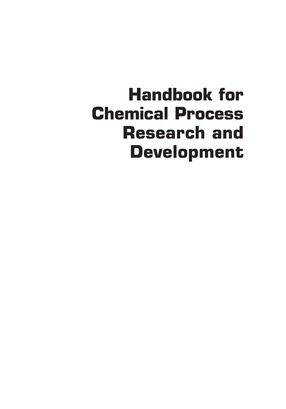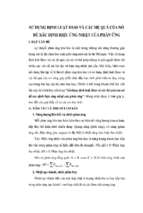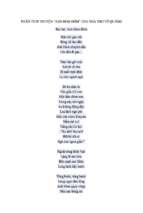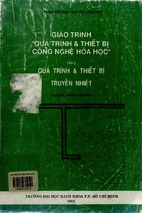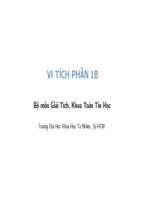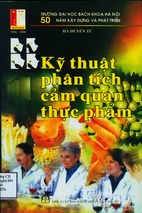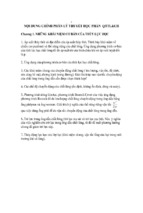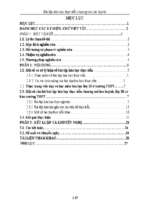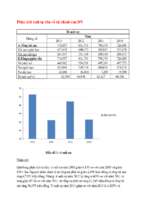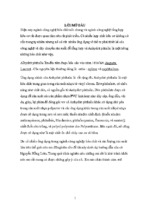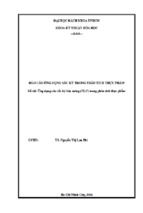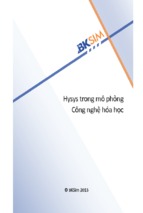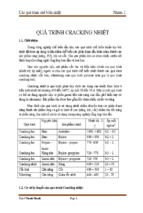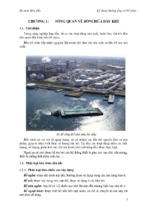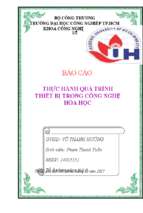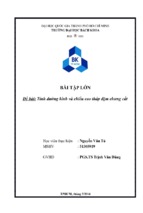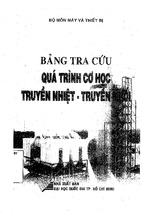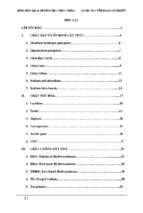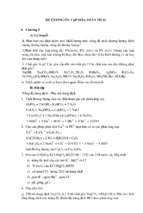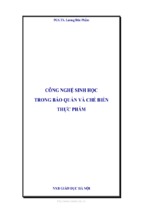Designation: D 471 – 98e1
Standard Test Method for
Rubber Property—Effect of Liquids1
This standard is issued under the fixed designation D 471; the number immediately following the designation indicates the year of
original adoption or, in the case of revision, the year of last revision. A number in parentheses indicates the year of last reapproval. A
superscript epsilon (e) indicates an editorial change since the last revision or reapproval.
This standard has been approved for use by agencies of the Department of Defense.
e1 NOTE—Table 3 was editorially updated in September 1999.
D 92 Test Method for Flash and Fire Points by Cleveland
Open Cup2
D 97 Test Method for Pour Point of Petroleum Products2
D 287 Test Method for API Gravity of Crude Petroleum and
Petroleum Products (Hydrometer Method)2
D 412 Test Methods for Vulcanized Rubber and Thermoplastic Rubbers and Thermoplastic Elastomers— Tension3
D 445 Test Method for Kinematic Viscosity of Transparent
and Opaque Liquids (and the Calculation of Dynamic
Viscosity)2
D 611 Test Methods for Aniline Point and Mixed Aniline
Point of Petroleum Products and Hydrocarbon Solvents2
D 751 Test Methods for Coated Fabrics4
D 975 Specification for Diesel Fuel Oils2
D 1217 Test Method for Density and Relative Density
(Specific Gravity) of Liquids by Bingham Pycnometer2
D 1415 Test Method for Rubber Property—International
Hardness3
D 1500 Test Method for ASTM Color of Petroleum Products (ASTM Color Scale)2
D 1747 Test Method for Refractive Index of Viscous Materials2
D 2008 Test Method for Ultraviolet Absorbance and Absorptivity of Petroleum Products2
D 2140 Test Method for Carbon-Type Composition of Insulating Oils of Petroleum Origin5
D 2240 Test Method for Rubber Property—Durometer
Hardness3
D 2699 Test Method for Research Octane Number of
Spark-Ignition Engine Fuel6
D 3182 Practice for Rubber—Materials, Equipment, and
Procedures for Mixing Standard Compounds and Preparing Standard Vulcanized Sheets3
D 3183 Practice for Rubber—Preparation of Pieces for Test
Purposes from Products3
D 4483 Practice for Determining Precision for Test Method
Standards in the Rubber and Carbon Black Industries3
1. Scope
1.1 This test method covers the required procedures to
evaluate the comparative ability of rubber and rubber-like
compositions to withstand the effect of liquids. It is designed
for testing: ( 1) specimens of vulcanized rubber cut from
standard sheets (see Practice D 3182), (2) specimens cut from
fabric coated with vulcanized rubber (see Test Method D 751),
or (3) finished articles of commerce (see Practice D 3183). This
test method is not applicable to the testing of cellular rubbers,
porous compositions, and compressed sheet packing, except as
described in 11.2.2.
1.2 ASTM Oils No. 2 and No. 3, formerly used in this test
method as standard test liquids, are no longer commercially
available and in 1993 were replaced with IRM 902 and IRM
903, respectively (see Appendix X1 for details).
1.3 This test method includes the following:
Change in Mass (after immersion)
Change in Volume (after immersion)
Dimensional-Change Method for Water-Insoluble Liquids and Mixed Liquids
Change in Mass with Liquid on One Surface Only
Determining Mass of Soluble Matter Extracted by the
Liquid
Change in Tensile Strength, Elongation and Hardness
(after immersion)
Change in Breaking Resistance, Burst Strength, Tear
Strength and Adhesion for Coated Fabrics
Calculation (of test results)
Section 10
Section 11
Section 12
Section 13
Section 14
Section 15
Section 16
Section 17
1.4 The values stated in SI units are to be regarded as the
standard. The values in parentheses are for information only.
1.5 This standard does not purport to address all of the
safety concerns, if any, associated with its use. It is the
responsibility of the user of this standard to establish appropriate safety and health practices and determine the applicability of regulatory limitations prior to use.
2. Referenced Documents
2.1 ASTM Standards:
1
This test method is under the jurisdiction of ASTM Committee D-11 on Rubber
and is the direct responsibility of Subcommittee D11.15 on Degradation Tests.
Current edition approved November 10, 1998. Published December 1998.
Originally published as D 471 – 37 T. Last previous edition D 471 – 97.
2
Annual
Annual
4
Annual
5
Annual
6
Annual
3
Copyright © ASTM, 100 Barr Harbor Drive, West Conshohocken, PA 19428-2959, United States.
1
Book
Book
Book
Book
Book
of
of
of
of
of
ASTM
ASTM
ASTM
ASTM
ASTM
Standards,
Standards,
Standards,
Standards,
Standards,
Vol
Vol
Vol
Vol
Vol
05.01.
09.01.
09.02.
10.03.
05.05.
D 471
D 4485 Specification for Performance Engine Oils7
D 4678 Practice for Rubber– Preparation, Testing, Acceptance, Documentation, and Use of Reference Materials3
D 5900 Specifications for Physical and Chemical Properties
of Industry Reference Materials (IRM)3
E 145 Specification for Gravity-Convection and ForcedVentilation Ovens8
2.2 SAE Standards:9
J 300 Engine Oil Viscosity Classification
5.1.1 When the temperature of the testing room is other than
the standard 23 6 2°C (73 6 4°F) the temperature of test shall
be reported.
TABLE 1 Test Temperatures and Immersion Periods
Immersion
Period, h
Temperature in °C (°F)
−75 6 2
−55 6 2
−40 6 2
−25 6 2
−10 6 2
062
23 6 2
50 6 2
70 6 2
3. Summary of Test Method
3.1 This test method provides procedures for exposing test
specimens to the influence of liquids under definite conditions
of temperature and time. The resulting deterioration is determined by measuring the changes in physical properties, such as
stress/strain properties, hardness, and changes in mass, volume,
and dimension, before and after immersion in the test liquid.
3.2 The precision statement in Section 19 is based on an
interlaboratory test program run in 1981, using six different
rubbers with ASTM Reference Fuels B, C, D10 and ASTM Oils
No. 1 and No. 3.
3.3 The precision statement in Appendix X2 is based on an
interlaboratory test program conducted in 1993 to establish
replacements for ASTM Oils No. 2 and No. 3. Because of the
limited number of participating laboratories, only repeatability
could be evaluated, and it was necessary to use pooled values
of four No. 2 type oils (No. 2 plus three candidate replacement
oils) and four No. 3 type oils (No. 3 plus three candidate
replacement oils). Twelve rubbers were tested in this program.
(−103 6 4)
(−67 6 4)
(−40 6 4)
(−13 6 4)
(14 6 4)
(32 6 4)
(73 6 4)
(122 6 4)
(158 6 4)
85 6 2
100 6 2
125 6 2
150 6 2
175 6 2
200 6 2
225 6 2
250 6 2
(185
(212
(257
(302
(347
(392
(437
(482
6
6
6
6
6
6
6
6
4)
4)
4)
4)
4)
4)
4)
4)
22
46
70
166
670
1006
2998
4990
5.1.2 The choice of the immersion period will depend upon
the nature of the vulcanizate, the test temperature, and the
liquid to be used. To obtain information on the rate of
deterioration it is necessary to make determinations after
several immersion periods. The tolerance for any immersion
period shall be 615 min or 61 % of the immersion period,
whichever is greater.
5.2 Illumination— Immersion tests shall be made in the
absence of direct light.
6. Standard Test Liquids
6.1 For test purposes, it is usually desirable to use the liquid
that will come into contact with the vulcanizate in service. For
comparative tests with liquids of unknown or doubtful composition, samples of liquid from the same container or shipment shall be used. Many commercial products, particularly
those of petroleum origin, are subject to sufficient variation that
it is not practical to use them for test liquids. It is then
advisable to use a standard test liquid, such as described in
6.1.1 and 6.1.2, covering the range of properties that may be
encountered in the particular service.
6.1.1 ASTM and IRM Oils—The test shall be conducted in
one of the petroleum-base ASTM or IRM oils (Note 1)
specified in Table 2 that has its aniline point nearest that of the
oil with which the vulcanizate is expected to come in contact
in service except as indicated in 6.1.3.
4. Significance and Use
4.1 Certain rubber articles, for example, seals, gaskets,
hoses, diaphragms, and sleeves, may be exposed to oils,
greases, fuels, and other fluids during service. The exposure
may be continuous or intermittent and may occur over wide
temperature ranges.
4.2 Properties of rubber articles deteriorate during exposure
to these liquids, affecting the performance of the rubber part,
which can result in partial failure.
4.3 This test method attempts to simulate service conditions
through controlled accelerated testing, but may not give any
direct correlation with actual part performance, since service
conditions vary too widely. It yields comparative data on which
to base judgment as to expected service quality.
4.4 This test method is suitable for specification compliance
testing, quality control, referee purposes, and research and
development work.
NOTE 1—The aniline point of a petroleum oil appears to characterize
the swelling action of that oil on rubber vulcanizates. In general, the lower
the aniline point, the more severe the swelling action by the oil. The oils
specified in Table 2 cover a range of aniline points commonly found in
lubricating oils.
5. Test Conditions
5.1 Temperature and Immersion Periods—Unless otherwise
specified the test temperature and immersion period shall be as
indicated in Table 1, depending upon the anticipated service
conditions:
6.1.2 ASTM Reference Fuels—When gasolines or diesel
fuels are to be encountered in service, the test shall be
conducted in one of the ASTM reference fuels (Note 2)
specified in Table 3, except as indicated in 6.1.3.
NOTE 2—The ASTM reference fuels in Table 3 have been selected to
provide the maximum and minimum swelling effects produced by
commercial gasolines. Reference Fuel A has a mild action on rubber
vulcanizates and produces results of the same order as low swelling
gasolines of the highly paraffinic, straight run type. Reference Fuels B, C,
and D simulate the swelling behavior of the majority of commercial
gasolines, with Reference Fuel C producing the highest swelling which is
typical of highly aromatic premium grades of automotive gasoline.
7
Annual Book of ASTM Standards, Vol 05.02.
Annual Book of ASTM Standards, Vol 14.02.
9
Available from Society of Automotive Engineers (SAE), 400 Commonwealth
Drive, Warrendale, PA 15096.
10
Reference Fuels A, B, C, D, and E are available from Phillips Petroleum Co.,
Customer Service Center, P.O. Box 968, Borger, TX 79007: Phone: 1 (800)
858-4327; FAX: 1 (806) 275-3771.
8
2
D 471
TABLE 2 Specifications and Typical Properties of ASTM and IRM Reference Oils
Property
ASTM Oil No. 1
ASTM Oil No. 5
IRM 902
IRM 903
ASTM Method
Specified Properties:
Aniline Point, °C (°F)
Kinematic Viscosity
(mm2/s [cSt])
38°C (100°F)
99°C (210°F)
Gravity, API, 16°C (60°F)
Viscosity-Gravity Constant
Flash Point COC, °C (°F)
Naphthenics, CN(%)
Paraffinics, CP(%)
124 6 1 (255 6 2)
115 6 1 (2396 2)
93 6 3 (199 6 5)
706 1 (158 6 2)
D 611
...
18.7–21.0
...
...
243 (469) min
...
...
...
10.8–11.9
...
...
243 (469) min
...
...
...
19.2–21.5
19.0–21.0
0.860–0.870
240 (464) min
35 min
50 max
31.9–34.1
...
21.0–23.0
0.875–0.885
163 (325) min
40 min
45 max
D 445
D 445
D 287
D 2140
D 92
D 2140
D 2140
Typical Properties:
Pour Point, °C (°F)
ASTM Color
Refractive Index
UV Absorbance, 260 nm
Aromatics, CA(%)
...
...
...
...
...
−15 (5)
L 1.0
1.4808
...
4
−12 (10)
L 2.5
1.5105
4.0
12
−31 (−24)
L 0.5
1.5026
2.2
14
D 97
D 1500
D 1747
D 2008
D 2140
TABLE 3 ASTM Reference Fuels
Fuel Type
Reference
Reference
Reference
Reference
Reference
Reference
Reference
Reference
Reference
Reference
Fuel A
Fuel B
Fuel C
Fuel D
Fuel E
Fuel F
Fuel G
Fuel H
Fuel I
Fuel K
TABLE 4 ASTM Service Liquids
Composition, Volume %
Liquid
IsooctaneA, 100
IsooctaneA, 70; TolueneA, 30
IsooctaneA, 50; TolueneA, 50
IsooctaneA, 60; TolueneA, 40
TolueneA, 100
Diesel Fuel, Grade No. 2B, 100
Fuel D, 85; anhydrous denatured ethanolC, 15
Fuel C, 85; anhydrous denatured ethanolC, 15
Fuel C, 85; anhydrous methanol, 15
Fuel C, 15; anhydrous methanol, 85
Composition
Service Liquid 101A di-2 ethyl hexyl sebacate, 99.5 mass %; phenothiazine,
0.5 mass %
Service Liquid 102B ASTM Oil No. 1, 95 mass %; hydrocarbon compound
additiveC, 5 mass % (29.5–33.5 mass % sulfur,
1.5–2.0 mass% phosphorus, 0.7 mass % nitrogen)
Service Liquid 103D tri-n-butyl phosphate, 100 mass %
Service Liquid 104E ethylene glycolF, 50 volume %; distilled water, 50
volume %
Service Liquid 105G ASTM Reference Oil TMC 1006
Service Liquid 106H ARM 200 (Aerospace Reference Material 200)
A
Service liquid 101 is intended to simulate the swelling action of synthetic
diester-type lubricating oils.
B
Service liquid 102 approximates the swelling behavior of hydraulic oils.
C
This hydrocarbon oil additive is available as Anglamol 99 from Lubrizol Corp.,
29400 Lakeland Blvd., Wickliffe, OH 44092. Properties are as follows: Kinematic
viscosity (mm2/s [cSt]) at 99°C (210°F) − 9.70 6 0.52 (Test Method D 445); Flash
point COC °C (°F) − 45 (113) min (Test Method D 92); Density at 16°C
(61°F) − 1.065 6 0.015 (Test Method D 1217).
D
Service liquid 103 simulates phosphate ester-type aircraft hydraulic oils.
E
Service liquid 104 approximates the swelling behavior of automotive engine
coolant.
F
Ethylene glycol, reagent grade, shall be used.
G
Service Liquid 105 is an API SJ/ILSAC GF-2 SAE 5W-30 reference engine oil
meeting the requirements of ASTM D 4485 and SAE J 300. It is available from
ASTM Test Monitoring Center, 6555 Penn Avenue, Pittsburgh, PA 15206–4489.
Phone (412) 365–1000, Fax (412) 365–1047.
H
Service Liquid 106 is intended to eventually replace Service Liquid 101 which
is no longer readily available for purchase as a mixture. ARM 200 is available from
SAE, 400 Commonwealth Drive, Warrendale, PA 15096.
A
Motor Fuels, Section 1, Test Method D 2699
Specification D 975.
C
Anhydrous ethanol denatured with unleaded gasoline (CDA formula No. 20),
available from Archer-Daniels-Midland, P.O. Box 1470, Decatur, IL 62525.
B
Reference Fuel F (diesel fuel) swells rubber vulcanizates to a lesser extent
than Reference Fuel B. Reference Fuels G, H, and I are fuel-alcohol
blends (gasohol), which have a stronger swelling action than the corresponding fuel alone, where blends with methanol are more severe than
blends with ethanol. Reference Fuel K, a methanol-rich blend, has a
substantially weaker swelling action than that of the fuel used to prepare
the blend. Reference Fuels I and K are also referred to as M15 and M85,
respectively.
6.1.3 Service Liquids— Some commercial oils, fuels and
other service liquids (see Table 4) are either non-petroleum or
are compounded from special petroleum hydrocarbon fractions
or mixtures of petroleum hydrocarbon fractions and other
ingredients resulting in materials having properties beyond the
range of the reference fluids listed in Table 2 and Table 3.
Immersion tests of rubber vulcanizates that are to come into
contact with such fluids should be made in the actual service
liquid.
6.1.4 Water—Since the purity of water varies throughout
the world, all water immersion tests are to be conducted in
distilled or deionized water.
outside diameter of 38 mm (1.5 in.) and an overall length of
300 mm (12 in.) fitted loosely with a stopper (see 8.2.1) shall
be used.11 Glass beads shall be used in the liquid as a bumper
and to separate the specimens.
8.2 For volatile liquids, the test tube described in 8.1 shall
be tightly fitted with a stopper (see 8.2.1) and a reflux
condenser. An air-cooled reflux condenser shall be used for
ASTM Oils No. 112 ,13 and No. 5 and for IRM 90212 ,13 and
7. Preparation of Specimen
7.1 Except as otherwise specified in the applicable specifications, specimens shall be prepared in accordance with the
requirements of Practices D 3182 and D 3183.
11
Test tubes available under Part No. LGB24 and LGB24C (case of 30) from
Edwin H. Benz Co. Inc., 73T Maplehurst Ave., Providence, RI 02908 or under Part
No. LG226 from Precision Scientific, 2777 Washington Blvd., Bellwood, IL 60104,
have been found suitable for this purpose.
12
Information about ASTM Oil No. 1 is included in Research Report RR:
D11-1004 and information about IRM 902 and IRM 903 in Research Report RR:
D11-1069. Both reports are available from ASTM Headquarters.
8. Apparatus
8.1 For non-volatile liquids, a glass test tube, having an
3
D 471
IRM 90312,13 at test temperatures of 125°C (257°F) or more.
This condenser shall be a glass tube, approximately 500 mm
(20 in.) or longer, in length and 15 mm (0.6 in.) in outside
diameter, tightly fitted to the immersion tube by means of a
stopper (see 8.2.1). The bottom of the condenser tube shall
project about 12 mm (0.47 in.) below the stopper. A suitable
(watercooled) reflux condenser shall be used for water or other
low-boiling liquids. Glass beads shall be used as in 8.1.
8.2.1 The stopper shall not contaminate the test liquid.
When in doubt, cover the stopper with aluminum foil.
8.3 Maintaining Test Temperatures—The apparatus and
method chosen to maintain the specified temperature during
immersion testing varies with test conditions, requirements,
and circumstances. Water baths, appropriate temperature transfer oil baths, hot air ovens Note 3, or aging blocks14 may be
used.
8.3.2.9 Baffles shall be used as required to prevent local
overheating and dead spots.
8.3.2.10 The thermostatic control device shall be so located
as to give accurate temperature control of the heating medium.
The preferred location is adjacent to the recording thermometer.
8.3.2.11 An actual check shall be made by means of
maximum reading thermometers placed in various parts of the
oven to verify the uniformity of the heating.
9. Test Specimens—Change in Mass or Volume
9.1 The standard specimen shall be rectangular, having
dimensions of 25 by 50 by 2.0 6 0.1 mm (1 by 2 by 0.08 6
0.004 in.). Specimens from commercial articles shall be the
thickness of the material as received when they are less than 2
mm (0.08 in.); otherwise they should be reduced to a thickness
of 2.0 6 0.1 mm (0.08 6 0.004 in.). Data obtained on test
specimens having different original thicknesses are not comparable.
NOTE 3—When hot air ovens are used, it should be noted that
contamination with volatile components of the immersion liquid may
occur. This can affect test results, when the same ovens are subsequently
used for hot air aging.
10. Procedure for Change in Mass
10.1 Test three specimens of a single composition. Calculate
the test results of the three specimens (see 17.1, Eq 1) and
average the results. Weigh each specimen in air to the nearest
1 mg, record the mass as M1, and immerse in the test tube (see
8.1) containing 100 cm3 of the test liquid (see 10.1.1). Separate
each test specimen from any adjacent test specimen and the
walls of the test tube by approximately 6 mm (0.25 in.), for
example, by perforated glass beads15 as shown in Fig. 1. The
8.3.1 The preferred method for above room temperatures is
the use of aging blocks, since they have the widest temperature
capability.
8.3.2 Ovens—Type IIB ovens specified in Test Method
E 145 are satisfactory for use through 70°C. For higher
temperatures, Type IIA ovens are necessary.
8.3.2.1 The interior size shall be as follows or of an
equivalent volume:
Interior size of air oven:
min
max
300 by 300 by 300 mm (12 by 12 by 12 in.)
900 by 900 by 1200 mm (36 by 36 by 48 in.)
15
Hollow perforated glass beads, available under Catalog No. 11-311C from
Fisher Scientific Co., 711T Forbes Ave., Pittsburgh, PA 15219, have been found
suitable for this purpose.
8.3.2.2 Provision shall be made for placing immersion test
tubes in the oven without touching each other or the sides of
the aging chamber and allowing proper air circulation around
them.
8.3.2.3 The heating medium for the aging chamber shall be
air circulated within it at atmospheric pressure.
8.3.2.4 The source of heat is optional but shall be located in
the air supply outside of the aging chamber proper.
8.3.2.5 A recording thermometer located in the upper central portion of the chamber near the center of the aging
specimens shall be provided to record the actual aging temperature.
8.3.2.6 Automatic temperature control by means of thermostatic regulation shall be used.
8.3.2.7 The following special precautions shall be taken in
order that accurate, uniform heating is obtained in all parts of
the aging chamber:
8.3.2.8 The heated air shall be thoroughly circulated in the
oven by means of mechanical agitation. When a motor-driven
fan is used, the air must not come in contact with the fan motor
brush discharge because of danger of ozone formation.
13
ASTM Oil No. 1, IRM 902 and IRM 903 may be ordered from Penreco, 4426
East Washington Blvd., Los Angeles, CA 90023-4476. ASTM Oils No. 1, No. 5,
IRM 902, and IRM 903 are distributed by R. E. Carroll, Inc., P.O. Box 5806,
Trenton, NJ 08638-0806.
14
Aging blocks, available under Model No. LGB9 (9 cavities) and LGB28 (28
cavities) from Edwin H. Benz Co., Inc., 73T Maplehurst Ave., Providence, RI
02908, have been found suitable for this purpose.
FIG. 1 Method of Separation
4
D 471
quickly in acetone at room temperature, blot lightly with filter
paper free of lint or foreign material, place in a tared, stoppered
weighing bottle, weigh, and record the mass as M3. Remove
each specimen from the bottle, weigh in distilled water, and
record the mass as M4 in immediate consecutive order to
determine the water displacement after immersion (see 11.2.2
and Note 4). When data on progressive changes with increasing
time of immersion are desired, dip each specimen after
weighing in alcohol (methanol or ethanol) to remove water (see
11.2.3), blot dry with filter paper free of lint and foreign
material, and again immerse in the same test liquid (see
11.2.1). It is important that each manipulation following
removal of the test specimen from the test medium take place
promptly with the least possible lapse in time. When utilizing
liquids that tend to volatilize at room temperature, no more
than 30 s should elapse between removal from the test liquid
and stoppering the weighing bottle, and no more than an
additional 30 s between removal from the weighing bottle and
immersion in water.
11.2 Relatively viscous oils may be difficult to remove from
the specimens with a quick acetone dip and blotting or even
more vigorous wiping when specimens are cooled in the test
liquid after immersion; this can yield erroneous test results.
Refer to 10.3 for an alternate method of specimen cooling.
11.2.1 Report if fresh test liquid is used, which can be a
requirement for certain test methods or specifications.
11.2.2 It is important that all air bubbles clinging to the test
specimen be removed before weighing in distilled water. If, in
the course of weighing, air bubbles appear on the surface of the
specimen, or the computed volume changes 0.5 % in 5 min, the
specimen is too porous to permit volume determination in this
manner. In that case, the initial volume of the specimen, if the
latter is a simple geometrical solid, can be determined from the
overall dimensions by employing an appropriate mensuration
formula, and the same procedure followed in determining the
volume after the immersion test; or, if volume increase occurs
principally in the thickness dimension, a simple change in
thickness may be substituted for change in volume. If, in the
course of weighing the test specimen floats, AISI No. 316
stainless steel can be used as ballast to immerse the test
specimen in the test liquid. In those cases where ballast is
needed to submerge the specimen, the following procedure
may be used.
11.2.2.1 Weigh the test specimen with ballast in water,
11.2.2.2 Weigh the ballast alone in water, and
11.2.2.3 Determine the difference between the weighings,
and proceed with the calculations.
11.2.3 The acetone dip before and after immersion shall be
omitted when water is employed as the test medium.
materials used to suspend and separate the specimens shall not
affect the test liquid or the rubber.
10.1.1 Test liquids shall not be reused.
10.1.1.1 For non-volatile liquids, condition the test tube
assembly at the specified temperature within the limits given in
5.1 for the specified length of time. A check of the actual
temperature of the test liquid contained in the test tube should
be made to ensure that the liquid is within the test temperature
specified.
10.1.1.2 For volatile liquids, fit the test tube assembly with
a reflux condenser (see 8.2) and condition at the specified
temperature within the limits given in 5.1 for the specified
length of time. A check of the actual temperature of the test
liquid contained in the test tube should be made to ensure that
the test liquid is within the test temperature specified.
10.2 After the immersion test has proceeded for the required
length of time, remove the test specimens. If the immersion has
been at elevated temperature, cool the test specimens to room
temperature by transferring them to a cool clean portion of the
test liquid for 30 to 60 min. Then dip the specimens quickly in
acetone at room temperature, blot lightly with filter paper free
of lint and foreign material, place them immediately in a tared,
stoppered weighing bottle, and determine the mass after test,
M2, of each specimen to the nearest 1 mg. After weighing,
again immerse the test specimen in the same test liquid (see
11.2.1) if data are desired on the progressive changes that occur
with increasing time of immersion. It is important that each
manipulation take place promptly with the least possible lapse
of time. When utilizing liquids that tend to volatilize at room
temperature, no more than 30 s should elapse between removal
from the test liquid and stoppering the weighing bottle.
10.3 Relatively viscous oils may be difficult to remove from
the specimens with a quick acetone dip and blotting or even
more vigorous wiping when the specimens are cooled in the
test liquid after immersion; this can yield erroneous test results.
Since these oils do not readily volatilize, specimens may be
cooled by suspending them for about 30 min in air at room
temperature shielded from draft, after removal from the immersion liquid at the test temperature. This will allow the
majority of the oil to drip off the surface of the specimen. Then
proceed with the acetone dip and blotting as described in 10.2.
Report when this alternate method of specimen cooling is used.
11. Procedure for Change in Volume
11.1 Water Displacement Method for Water-Insoluble Liquids and Mixed Liquids—Test three specimens, calculate the
test results for each specimen (see 17.2, Eq 2), and average the
results. Obtain the mass M1 of each specimen (see 11.2.2) in
air, to the nearest 1 mg, and then obtain the mass M 2 of each
specimen immersed in distilled water at room temperature.
Quickly dip each specimen in alcohol (methanol or ethanol) to
remove water (see 11.2.3), blot dry with filter paper free of lint
and foreign material, and place in the immersion apparatus
described in 8.1 or 8.2. Add 100 cm3 of liquid (see 10.1.1) to
the test tube and complete the immersion test as described in
10.1.1.1 or 10.1.1.2. At the end of the required immersion
period, remove each specimen from the test tube. Cool the
specimens to room temperature by transferring them to a cool,
clean portion of the test liquid for 30 to 60 min, then dip
NOTE 4—A jolly balance, adequately shielded from air currents, may be
used for making these determinations. When utilizing liquids that tend to
volatilize at room temperature, no more than 30 s should elapse between
removal from the test liquid and completion of the weighing operation.
11.3 Displacement Method for Water-Soluble Liquids and
Mixed Liquids (Other Than Water)—For immersion liquids
that are readily miscible with water or react with it, the water
displacement method as described in 11.1 may not be suitable.
For such liquids that are not too viscous or volatile at room
5
D 471
chamber, B, which is held tightly against the test specimen, C,
by wing nuts, D, mounted on bolts, E. During the test, the
opening in the top of the chamber is tightly closed by a suitable
plug, F.
13.4 Procedure—Weigh the test specimen in air to the
nearest 1 mg, record as M1, and place in the apparatus as
indicated in Fig. 2. Fill the chamber of the apparatus with the
test liquid to a depth of 15 mm (0.6 in.), replace plug F and
complete the test at the specified conditions as described in 5.1
and 5.2. At the end of the required immersion period, bring the
apparatus to standard room temperature, remove the test liquid,
and release the test specimen. Remove any excess liquid from
the surface by wiping or blotting with filter paper free of lint
and foreign material and place the specimen immediately in a
tared, stoppered weighing bottle. Determine the mass of the
specimen to the nearest 1 mg and record as M 2. When the
immersion liquid tends to volatilize at room temperature, no
more than 30 s should elapse between removal of the test
specimen from the liquid and stoppering the weighing bottle.
Use Eq 5 in 17.4 to calculate test results. If more than one
specimen of the same composition is tested, report the result as
the average.
temperature, weighings for M2 and M4 may be made in the
immersion liquid instead of water with weighing for M4 made
in a fresh portion of the immersion liquid. These values are
then used in calculating volume change using Eq 2 in 17.2. If
this is not practicable, the water displacement method shall be
used, except that the final weighing for M4 is omitted and
change in volume is calculated according to Eq 3 in 17.2. This
formula may be only approximate if the immersion liquid is a
mixture, because the density of the absorbed liquid may differ
from that of the bulk. Also the density of any matter extracted
from the rubber may differ from that of the immersion liquid.
12. Dimensional-Change Method for Water-Insoluble
Liquids and Mixed Liquids
12.1 Dimensional Change Method—Measure the original
length and width of three test specimens used in 11.1 to the
nearest 0.5 mm (0.02 in.) using an average of three measurements in each direction recording the dimensions as L 0 and W0,
respectively. Measure the thickness of each test piece using a
dial micrometer as described in 6.3 of Test Methods D 412, and
record as T0. Place specimens in the immersion apparatus
described in 8.1 and 8.2. Add 100 cm3 of liquid (see 10.1.1) to
the test tube and complete the immersion test as described in
10.1.1.1 or 10.1.1.2. At the end of the required immersion
period, remove each specimen from the test tube and bring to
room temperature by transferring them to a cool clean portion
of the test liquid for 30 to 60 min. Dip the specimens quickly
in acetone at room temperature, blot lightly with filter paper
free of lint and foreign material, and promptly remeasure as
described above, recording the immersed length, width, and
thickness as L, W, and T, respectively. If the immersion liquid
tends to volatilize at room temperature, the measurements
should be completed within 30 s after removing the test
specimens from the liquid at room temperature. Calculate test
results according to Eq 4 in 17.3 and report the average of three
specimens.
14. Procedure for Determining Mass of Soluble Matter
Extracted by the Liquid
14.1 This test method is applicable for immersions in
volatile-type immersion liquids, such as ASTM reference fuels
(see 6.1.2). Conduct the immersions as described in 10.1,
10.1.1.1, and 10.1.1.2. Test three specimens of a single
composition, and report the result as the average. The extracted
matter can be determined either by the difference in mass of the
specimen before and after immersion or by evaporating the test
liquid and weighing the non-volatile residue (Note 5). The
mass is determined in air to the nearest 1 mg.
NOTE 5—Both methods are subject to error. Results obtained by the
mass difference of specimens before and after immersion can be affected
by possible oxidation of the material during immersion. Results obtained
by evaporating the test liquid may be affected by partial loss of volatile
extracted material during drying. The method of choice will depend on the
material under test and the test conditions. For example, the evaporation
method would be preferred if further testing is to be done on the extracted
matter.
13. Procedure for Change in Mass with Liquid on One
Surface Only
13.1 Scope—This test method provides a procedure for
exposing thin sheet materials (rubber-coated fabrics, diaphragms, etc.) that are in contact with the immersion liquid on
only one surface under definite conditions of time and temperature.
13.2 Test Specimen— A disk 60 mm (2.4 in.) in diameter
and thickness of thin sheet or rubber-coated fabric being tested.
13.3 Apparatus—The essential features are illustrated in
Fig. 2 and consist of a base plate, A, an open-ended cylindrical
14.2 Mass-Difference Method—At the end of the required
immersion period, remove the test specimens from the test tube
and dry to a constant mass at a temperature of approximately
40°C (104°F) and an absolute pressure of 20 kPa (150 mm Hg).
Record the original mass of the test specimen before immersion as M1, the mass after immersion as M 2, and express the
change in mass as a percentage of the original mass, using Eq
6 in 17.5. Report the results as the average if more than one
specimen of the same composition is tested.
14.3 Evaporation Method—Transfer the liquid from the test
tube in which the three test specimens have been immersed to
a suitable vessel, wash the specimens in the test tube three
times with 25 cm3 of fresh liquid and transfer the liquid to the
same vessel. Evaporate the liquid and dry the residue to a
constant mass under an absolute pressure of 20 kPa (150 mm
Hg) and a temperature of approximately 40°C (104°F). Record
the sum of the original mass of three specimens before
FIG. 2 Surface Immersion Apparatus
6
D 471
airdrying cycle at room temperature for 20 h 6 15 min at 70 6
2°C (158 6 4°F) in a circulating-air oven. After the heat drying
cycle, remove the specimens from the oven, allow them to cool
to room temperature and measure the required physical properties as described in 15.4.1. Report when the heat drying
procedure is used.
15.5 The tensile strength and ultimate elongation after
immersion and evaporation also can be expressed as percent
change from the original values, using Eq 10 in 17.6, and
hardness in unit change from the original value, according to
Eq 11 in 17.6.
immersion as (M1, the mass of the dried residue as M3, and
express M3 as a percentage of (M1, using Eq 7 in 17.5.
15. Changes in Tensile Strength, Elongation, and
Hardness
15.1 Original Properties—The original tensile strength,
ultimate elongation (Test Methods D 412, Die C) and hardness
(Test Methods D 1415 or D 2240) shall be determined, using
three specimens cut from the sheet or article adjacent to those
that are to be immersed in the liquid. Report results in
accordance with the appropriate test method.
15.2 Immediate Deteriorated Properties—For determining
the tensile strength, ultimate elongation, and hardness, prepare
three test specimens from flat vulcanized sheets 2.06 0.1 mm
(0.08 6 0.004 in.) in thickness (see 9.1) using Die C of Test
Methods D 412. Measure the thickness of each test specimen,
place the specimens in the test tube described in 8.1, and add
150 cm3 of liquid (see 10.1.1) to the test tube. Complete the
immersion period in accordance with 10.1.1.1 or 10.1.1.2. At
the end of the required immersion period, remove the specimens from the test tubes and cool immediately to room
temperature in a fresh sample of the same liquid for 30 to 60
min. Then quickly dip each sample in acetone and blot lightly
with filter paper that is free of lint and foreign material and
immediately apply bench marks.
15.2.1 Determine the tensile strength and ultimate elongation in accordance with Test Methods D 412, using the original
unimmersed thickness or cross-sectional area (see 17.6, Eq 8).
Determine the hardness of each immersed specimen in accordance with Test Methods D 1415 or D 2240. The time interval
between removal from the cool liquid and testing shall be not
less than 2 nor more than 3 min.
15.2.2 It may be desirable to calculate the tensile strength
based on the swollen cross-sectional area. In that case Eq 9 in
17.6 shall be used. Report when this method of calculation is
employed.
15.3 Relatively viscous oils may be difficult to remove from
the specimens with a quick acetone dip and blotting or even
more vigorous wiping when specimens are cooled in the test
liquid after immersion; this can yield erroneous test results.
Refer to 10.3 for an alternate method of specimen cooling.
15.4 Properties After Evaporation of Test Liquid—This test
method is applicable for immersions in volatile-type immersion liquids, such as ASTM reference fuels (see 6.1.2). For
determining the tensile strength, ultimate elongation, and
hardness of specimens after evaporation of the immersion
liquid, immerse the specimens in the test liquid in accordance
with 15.2. At the end of the required immersion time, remove
the specimens and, if necessary, cool them to room temperature
in a fresh sample of the same liquid for 30 to 60 min.
15.4.1 For room temperature drying, suspend the specimens
for 4 6 0.25 h in air at ambient conditions shielded from drafts.
After the drying period apply bench marks and determine
tensile strength and ultimate elongation in accordance with
Test Methods D 412 using the original thickness or crosssectional area of the untreated specimens (see 17.6, Eq 8) and
hardness according to Test Methods D 1415 or D 2240.
15.4.2 For determining properties after complete evaporation of the test liquid, suspend specimens after the 4-h
16. Changes in Breaking Resistance, Burst Strength, Tear
Strength, and Adhesion for Coated Fabrics
16.1 Original Properties—The original properties for
breaking resistance, burst strength, tear strength, and adhesion
shall be determined in accordance with Test Method D 751,
using the specified number of specimens cut from the coated
fabric adjacent to those that are to be immersed in the liquid, or,
if necessary, from other pieces of coated fabric that were
produced from the same lot(s) of materials under the same
conditions.
16.2 Immediate Deteriorated Properties—For determining
breaking resistance, burst strength, tear strength, and adhesion,
prepare the number of specimens specified for each parameter
in Test Method D 751. Place the specimens in the test tube
described in 8.1 and add 150 cm3 of liquid (see 10.1.1) to the
test tube. Complete the immersion test in accordance with
10.1.1.1 or 10.1.1.2. At the end of the required immersion
period, remove the specimens from the test tubes, and cool
immediately to room temperature in a fresh sample of the same
liquid for 30 to 60 min. Then quickly dip each specimen in
acetone and blot lightly with filter paper that is free of lint or
foreign material. Measure the required physical properties in
accordance with Test Method D 751 (see 17.7). The time
interval between removal from the cool liquid and testing shall
be not less than 2 min nor more than 3 min.
16.3 Relatively viscous oils may be difficult to remove from
the specimens with a quick acetone dip and blotting or even
more vigorous wiping when specimens are cooled in the test
liquid after immersion; this can yield erroneous test results.
Refer to 10.3 for an alternate method of specimen cooling.
16.4 Properties After Evaporation of Volatile Test Liquid—
For determining breaking resistance, burst strength, tear
strength, and adhesion of specimens after evaporation of a
volatile immersion liquid, such as ASTM reference fuels (see
6.1.2), immerse the specimens in the test liquid in accordance
with 15.2. At the end of the required immersion time, remove
the specimens, suspend them for 2 h 6 5 min at ambient
conditions shielded from draft and then place them in a
circulating-air oven at a temperature of 70 6 2°C (158 6 4°F)
for a period of 2 h 6 5 min. At the end of the drying period,
remove the specimens from the oven, allow them to cool to
room temperature and measure the required physical properties
in accordance with Test Method D 751 (see 17.7). The time
interval between removal from the oven and testing shall be not
less than 1 h nor more than 2 h.
7
D 471
16.5 If desired, report results after immersion and evaporation in percent change from the original property values, as
described in 15.5.
where:
ME 5 extracted soluble matter, %,
M1 5 initial mass of specimen in air, g,
M2 5 mass of specimen in air after immersion and drying,
g,
(M1 5 sum of the initial mass of three specimens in air, g,
and
M3 5 mass of the residue in air after evaporating and
drying the immersion liquid of three specimens, g.
17. Calculation
17.1 Calculate the percent change in mass as follows
(Section 10):
DM, % 5
~ M2 2 M1 !
·100
M1
(1)
17.6 Calculate tensile strength of the specimens both on
immediate deteriorated properties and properties after evaporation of the test liquid as described in the Calculation section
of Test Methods D 412.
17.6.1 Based on the original unstretched cross-sectional
area:
where:
DM 5 change in mass, %,
M1 5 initial mass of specimen in air, g, and
M2 5 mass of specimen in air after immersion, g.
17.2 Calculate the percent change in volume as follows
(Section 11):
DV, % 5
~ M3 2 M 4 ! 2 ~ M 1 2 M 2 !
·100
~ M1 2 M 2 !
~ M3 2 M1 !
DV, % 5
·100
d~M 1 2 M2!
(2)
F
TSo 5 A
(3)
17.6.2 Based on the swollen unstretched cross-sectional
area:
TSs 5
where:
DV 5
M1 5
M2 5
M3 5
M4 5
d
5
change in volume, %,
initial mass of specimen in air, g,
initial mass of specimen in water, g,
mass of specimen in air after immersion, g,
mass of specimen in water after immersion, g, and
density of immersion liquid at standard laboratory
room temperature, Mg/m 3.
17.3 Calculate the percent change in dimensions as follows
(Section 12):
DL, % 5
~ L 2 L0 !
·100
L0
~ M2 2 M 1 !
·1000
A
DP, % 5
~ M1 2 M 2 !
·100
M1
M3
ME, % 5 (M ·100
D
2/3
(9)
P i 2 Po
Po ·100
(10)
17.6.4 Calculate hardness change after immersion in hardness units:
DH 5 Hi 2 H o
(4)
(11)
where:
TSo 5 tensile stress based on original unstretched crosssectional area,
TSs 5 tensile stress based on swollen unstretched crosssectional area,
F
5 observed force,
A
5 original unstretched cross-sectional area of the test
specimen before immersion,
DV 5 volume swell after immersion, %,
DP 5 change in property (tensile strength and ultimate
elongation) after immersion, %,
Po 5 original property before immersion,
Pi 5 property after immersion,
DH 5 hardness change after immersion, units,
Ho 5 original hardness before immersion, units, and
H i 5 hardness after immersion, units.
17.7 Calculate breaking resistance, burst strength, tear
strength, and adhesion both on the immediate deteriorated
properties and properties after evaporation of volatile test
liquid as described in Test Method D 751. If desired, results
may also be expressed in percentage change after immersion as
detailed in 17.6.3.
(5)
where:
DMA 5 change in mass per unit surface area, kg/m2,
5 initial mass of specimen in air, g,
M1
M 2 5 mass of specimen in air after exposure to the test
liquid, g, and
A
5 area of the specimen in actual contact with the test
liquid, mm2.
17.5 Calculate percent extracted soluble matter as follows
(Section 14):
ME, % 5
S
17.6.3 To express tensile strength and ultimate elongation
after immersion as a percentage change from the original
properties, use the following formula:
where:
DL 5 change in length, %,
L0 5 initial length of specimen, mm, and
L
5 length of specimen after immersion, mm.
Calculate the percent change in width, DW, and thickness,
DT, accordingly.
17.4 Calculate the change in mass for single surface exposure as follows (Section 13):
DMA, kg/m 2 5
F
DV
A 1 1 100
(8)
(6)
18. Report
18.1 State that the test was conducted in accordance with
Test Method D 471 and report the following:
(7)
1
8
D 471
19.4 The results of the precision evaluation are given in
Table 5 and Table 6 for each of the six rubbers or materials for
immersion tests in (1) Reference Fuels B, C and D, for 70 h at
23 6 2°C (73 6 4°F), and (2) ASTM Oil No. 2 and ASTM Oil
No. 3 for 70 h at 150 6 2°C (302 6 4°F).
19.5 The precision is given in terms of Sr, r, SR, and R for
four measured physical properties: (1) percent change in tensile
strength, (2) percent change in ultimate elongation (that is,
percent change in percent elongation), (3) hardness change in
hardness units, and (4) percent change in volume of the test
specimen. No values are given for ( r) and (R), the normal
precision parameters used to express relative precision because
numerous average values for properties (1), (2), and ( 4) are
near zero, thus resulting in extremely large ( r) and (R) values.
These large values are essentially meaningless for precision
comparisons when average values are near zero.
19.6 The precision of the test method may be expressed in
the following statements that use an appropriate value of r and
R. The appropriate value is that value of r or R, associated with
a mean level in the tables closest to the mean level under
consideration for any immersion liquid or rubber, for any test
result for a similar material in routine testing operations.
19.7 Repeatability— The repeatability, r, of this test method
has been established as the appropriate value tabulated in Table
5 and Table 6. Two single test results, obtained under normal
test method procedures, that differ by more than this tabulated
r (for any given level) must be considered as derived from
different or nonidentical sample populations.
19.8 Reproducibility— The reproducibility, R, of this test
method has been established as the appropriate value tabulated
in Table 4 through Table 6. Two single test results obtained in
two different laboratories, under normal test method procedures, that differ by more than the tabulated R (for any given
value) must be considered to have come from different or
nonidentical sample populations.
19.9 Bias—In test terminology, bias is the difference between an average test value and the reference (or true) value.
Reference values do not exist for this test method since the
value (of the test property) is exclusively defined by the test
method. Bias, therefore, cannot be determined.
18.1.1 Description of the sample and its origin,
18.1.2 Date and temperature of testing room (see 5.1),
18.1.3 Duration, temperature, and date of vulcanization of
test specimens,
18.1.4 Dates of the various periods of exposure,
18.1.5 Immersion liquid used,
18.1.6 Temperature of exposure,
18.1.7 Exposure period,
18.1.8 All observed and recorded data, to include the type of
properties being reported,
18.1.9 Results calculated in accordance with Section 17,
18.1.10 Statement of condition of exposed specimens from
visual and manual examination,
18.1.11 Report which test method was used for determination of hardness, and
18.1.12 Any deviations from standard test methods.
19. Precision and Bias 16
19.1 This precision and bias section deals with property
changes in tensile strength, ultimate elongation, hardness, and
volume after immersion in test liquids and has been prepared in
accordance with Practice D 4483. Refer to this practice for
terminology and other statistical calculation details.
19.2 The precision results in this precision and bias section
give an estimate of the precision of this test method with the
materials used in the particular interlaboratory test program as
described in the following paragraphs. The precision parameters should not be used for acceptance or rejection testing of
any group of materials without documentation that the parameters are applicable to the particular group of materials and the
specific testing protocols of the test method.
19.3 A Type 1 interlaboratory test program was evaluated in
1981 using six different vulcanized rubber compounds (materials). These compounds were prepared in one laboratory and
test specimens were distributed to nine participating laboratories. Each laboratory prepared and purchased from approved
sources, the liquids and fuels, or both, used for testing. A test
result (as used for these calculations) is the average of three
individual test specimen values. Each laboratory conducted
tests (that is, obtained one test result) on each of two days. Both
repeatability and reproducibility are therefore short term; a
period of a few days separates test results.
20. Keywords
20.1 elevated temperature; fluid immersion; liquid immersion; reference fuel; rubber articles; rubber products; service
liquid
16
Details and supporting data of the precision evaluation program are available
in a research report from ASTM Headquarters. Request RR: D11-1069.
9
D 471
TABLE 5 Type 1 Precision DataA
Change in Tensile Strength, %
Rubber
Within-Lab
Change in Elongation,%
Between-Lab
Within-Lab
Change in Hardness, Units
Between-Lab
Within-Lab
Between-Lab
Sr
r
SR
R
Mean
Sr
r
SR
R
Mean
Sr
r
SR
R
ASTM Reference Fuel B:
CR
−48.0
FKM
−7.9
FVMQ
−30.6
NBR-1
−63.6
NBR-2
−11.8
CO
−8.6
3.12
1.94
4.17
2.90
2.59
3.35
8.8
5.5
11.8
8.2
7.3
9.5
3.26
3.55
6.08
4.27
3.75
5.23
9.2
10.0
17.2
12.1
10.6
14.8
−43.7
−0.1
−27.1
−50.3
−16.3
−26.0
4.55
3.25
2.47
3.44
2.41
4.19
12.9
9.2
7.0
9.7
6.8
11.9
5.36
3.58
7.05
7.24
4.55
3.04
15.2
10.1
19.9
20.5
12.9
8.6
−16.0
−2.3
−9.6
−9.8
−12.7
−12.4
0.76
0.90
1.12
0.87
1.15
1.00
2.1
2.6
3.2
2.5
3.3
2.8
1.87
1.68
2.16
1.32
1.73
1.68
5.3
4.8
8.1
3.7
4.9
4.8
Pooled Values
...
3.07
8.7
4.47
12.6
...
3.52
10.0
5.38
15.2
...
0.98
2.8
1.76
5.0
ASTM Reference Fuel C:
CR
−57.4
FKM
−11.1
FVMQ
−30.9
NBR-1
−68.9
NBR-2
−14.8
CO
−18.0
2.70
3.32
2.74
2.77
3.78
3.24
7.6
9.4
7.8
7.8
10.7
9.2
3.49
6.34
7.20
4.17
5.15
3.38
9.9
17.9
20.4
11.8
14.6
9.6
−54.2
−0.6
−28.4
−58.1
−21.0
−33.9
3.51
2.29
4.01
5.27
2.87
4.52
9.9
6.5
11.3
14.9
8.1
12.8
5.47
6.55
6.83
5.53
6.30
2.64
15.5
18.5
19.4
15.7
17.8
7.5
−17.7
−2.8
−9.7
−10.7
−18.3
−17.3
1.58
0.80
1.76
1.33
1.12
1.18
4.5
2.3
5.0
3.8
3.2
3.3
3.36
1.64
2.87
1.22
2.95
1.85
9.5
4.3
8.1
3.5
8.3
5.2
Pooled Values
Mean
3.10
8.8
5.16
14.6
...
3.89
11.0
5.73
16.2
...
1.35
3.8
2.43
6.9
ASTM Reference Fuel D:
CR
−54.8
FKM
−9.2
FVMQ
−33.2
NBR-1
−67.4
NBR-2
−12.4
CO
−14.6
2.69
2.26
3.45
2.01
3.05
3.02
7.6
6.4
9.8
5.7
8.6
8.5
2.36
6.00
5.90
4.00
2.56
3.36
6.6
17.0
16.7
11.3
7.2
9.5
−50.9
−0.2
−28.5
−55.8
−18.3
−30.0
1.83
2.83
3.44
2.35
1.78
3.08
5.2
8.0
9.7
6.7
5.0
8.7
3.62
6.83
7.13
5.05
6.21
3.31
10.2
19.3
20.2
14.3
17.6
9.4
−16.9
−1.9
−9.6
−10.9
−15.1
−15.3
0.60
0.85
1.39
1.06
0.79
1.17
1.7
2.4
3.9
3.0
2.2
3.3
2.57
2.46
2.48
0.98
3.39
3.41
7.3
6.9
7.0
2.8
9.6
9.7
Pooled Values
...
2.81
7.9
4.29
12.1
...
2.63
7.4
5.63
15.9
...
1.02
2.9
2.67
7.6
−15.4
−6.1
−4.3
−18.9
−7.7
20.2
2.78
5.25
5.93
3.55
3.38
4.81
7.9
14.8
16.8
10.0
9.6
13.6
5.01
6.11
9.48
6.38
9.67
7.25
14.2
17.3
26.8
18.1
27.4
20.5
−31.3
−9.3
−11.9
−12.5
−70.7
−48.5
1.94
4.38
4.89
5.07
3.67
3.72
5.5
12.4
13.8
14.3
10.4
10.5
5.20
5.74
4.34
10.49
7.17
4.17
14.7
16.2
12.3
29.7
20.3
11.8
−8.6
−2.8
−2.4
−4.0
17.2
8.6
1.39
1.84
1.54
1.09
1.32
0.67
3.9
5.2
4.4
3.1
3.7
1.9
2.80
3.34
3.20
2.74
2.08
3.24
7.9
9.4
9.0
7.8
5.9
9.2
...
4.43
12.5
7.52
21.3
...
4.06
11.5
6.55
18.5
...
1.36
3.8
3.11
8.8
−42.5
−11.3
−18.2
−37.2
−27.0
21.7
3.43
4.27
2.84
5.32
5.67
6.50
9.7
12.1
8.0
15.1
16.0
18.4
4.19
17.20
10.65
12.82
14.64
10.29
11.9
48.7
30.1
36.6
41.4
29.1
−42.0
−2.4
−17.9
−19.5
−69.7
−39.7
2.64
4.58
5.28
6.12
3.80
5.42
7.5
12.9
14.9
17.3
17.3
10.7
4.41
7.95
6.83
12.19
5.72
4.40
12.5
22.5
19.3
34.5
16.2
12.4
−19.1
−2.9
−1.9
−12.7
10.6
3.3
1.27
1.15
1.25
1.44
1.39
0.97
3.6
3.3
3.5
4.1
3.9
2.8
4.46
3.67
1.74
4.67
2.22
2.73
12.6
10.4
4.9
13.2
8.3
7.7
...
4.85
13.7
12.33
34.9
...
4.76
13.5
7.55
21.4
...
1.25
3.5
3.61
10.2
ASTM Oil No. 1:
CR
FKM
FVMQ
NBR-1
NBR-2
CO
Pooled Values
ASTM Oil No. 3:
CR
FKM
FVMQ
NBR-1
NBR-2
CO
Pooled Values
...
Sr 5 repeatability standard deviation, in measurement units, r 5 repeatability 5 2.83 3 Sr, SR 5 reproducibility standard deviation, in measurement units, and
R 5 reproducibility 5 2.83 3 SR.
A
10
D 471
TABLE 6 Precision DataA
Change in Volume, %
Rubber
Within-Laboratory
Between-Laboratories
Mean
Sr
r
SR
R
ASTM Reference Fuel B:
CR
FKM
FVMQ
NBR-1
NBR-2
CO
Pooled Values
66.2
1.5
5.1
46.9
12.0
15.6
...
0.94
0.36
0.48
0.38
0.73
0.39
0.60
2.7
1.0
1.4
1.1
2.1
1.0
1.7
5.40
0.34
0.92
3.96
0.63
1.27
2.95
15.3
1.0
2.8
11.2
1.8
3.6
8.4
ASTM Reference Fuel C:
CR
FKM
FVMQ
NBR-1
NBR-2
CO
Pooled Values
108.9
2.6
17.8
76.8
22.6
25.3
...
1.04
0.46
0.53
0.59
0.69
0.51
0.64
2.9
1.3
1.5
1.7
2.0
1.4
1.8
4.99
0.32
1.61
3.47
0.77
0.59
2.60
14.1
0.9
4.5
9.8
2.2
1.7
7.4
ASTM Reference Fuel D:
CR
FKM
FVMQ
NBR-1
NBR-2
CO
Pooled Values
90.6
2.3
15.9
62.2
18.1
20.4
...
1.52
0.33
0.92
1.23
1.38
0.89
1.11
4.3
0.9
2.6
3.5
3.9
2.5
3.1
3.15
0.56
3.05
2.10
1.55
1.25
2.26
8.9
1.6
8.6
5.9
4.4
3.5
6.4
ASTM Oil No. 1:
CR
FKM
FVMQ
NBR-1
NBR-2
CO
Pooled Values
15.8
1.2
0.6
3.4
−11.2
−5.2
...
0.50
0.29
0.57
0.69
0.45
0.42
0.50
1.4
0.8
1.6
1.9
1.3
1.2
1.4
0.61
1.12
1.05
1.88
0.47
0.64
1.67
1.7
3.2
3.0
5.3
1.3
1.8
4.7
ASTM Oil No. 3:
CR
FKM
FVMQ
NBR-1
NBR-2
CO
Pooled Values
75.6
3.1
2.8
31.4
−2.1
4.2
...
1.03
1.47
0.61
0.18
0.14
0.24
0.88
2.9
4.2
1.7
1.5
2.5
0.7
2.5
1.84
1.97
3.75
4.21
0.67
0.77
2.70
5.2
5.6
2.4
11.9
1.9
2.2
7.6
A
Sr 5 repeatability standard deviation, in measurement units, r 5 repeatability 5 2.83 3 Sr, SR 5 reproducibility standard deviation, in measurement units, and
R 5 reproducibility 5 2.83 3 SR.
APPENDIXES
(Nonmandatory Information)
X1. REPLACEMENT OF ASTM OILS NO. 2 AND NO. 3 WITH IRM 902 AND IRM 903
X1.1 ASTM Oils No. 2 and No. 3 became subject to cancer
hazard warning label requirements under the OSHA Hazard
Communication Standard, published November 25, 1983. This
contributed to the discontinuation of commercial production in
1990.
different suppliers, using twelve different types of vulcanized
rubbers. As a result of this ITP, two oils from Calumet
Lubricants Company were selected as best (but not equivalent)
matches for the ASTM oils, and confirmed independently by
ASTM Subcommittee D11.15 and the SAE Committee on
Automotive Rubber Specifications (SAE-CARS). Calumet No.
2, the replacement for No. 2 oil, provided a closer match than
Calumet No. 3, the replacement for No. 3 oil. The two oils
were established as industry reference materials, IRM 902
(Calumet No. 2, replacement for ASTM Oil No. 2) and IRM
903 (Calumet No. 3, replacement for ASTM Oil No. 3).
X1.2 ASTM Subcommittee D11.15 on Degradation Testing
began a program in 1985–1986 to establish replacements for
these oils, with the objective to match the action on vulcanized
rubbers as closely as possible, while eliminating the need for
cancer hazard labeling (negative modified Ames Test). An
interlaboratory test program (ITP) was organized in 1993 with
six candidate oils as No. 2 and No. 3 replacements from three
X1.2.1 Details of the ITP are described in Research Report
11
D 471
RR: D11-1069, which can be obtained from ASTM headquarters. A precision statement on volume swells generated in this
test program is given in Appendix X2.
was depleted by the end of 1993, Committee D-11 published
Emergency Standard ES 27 in 1994 to address the replacement
with IRM 902 and IRM 903.
X1.3 Since the inventory of ASTM Oils No. 2 and No. 3
X2. PRECISION AND BIAS—TEST PROGRAM FOR THE REPLACEMENT OF ASTM OILS NO. 2 AND NO. 3
TABLE X2.1 Precision Data for Within-Laboratory Variation
X2.1 This precision statement was prepared using data
from the comprehensive ITP evaluation program conducted in
1993 to establish replacement oils for ASTM Oils No. 2 and
No. 3. Because of the limited number of laboratories (three),
only within-laboratory variation or repeatability could be
evaluated. Some terminology used in this appendix is contained in Practice D 4483. Refer to Practice D 4483 for
background details.
N OTE 1—Sr 5 repeatability
standard
deviation,
r 5 repeatability 5 2.83 3 Sr, (r) 5 repeatability on relative basis (percent of percent), and CV 5 coefficient of variation, % 5 (Sr/
Mean) 3 100.
Change in Volume, % (Pooled Values)
Rubber
Sr
r
(r)
CV
ASTM Oil No. 2 Types:A
ACM
1.3
AEM
27.8
CR
36.0
ECO
3.9
EPDM
120.2
EVM
34.1
FKM
0.7
FVMQ
0.4
HNBR
9.4
NBR
7.6
TPV
48.4
VMQ
10.4
0.57
0.82
1.63
0.58
2.17
0.60
0.20
0.31
0.30
0.35
1.98
1.36
1.60
2.33
4.61
1.65
6.14
1.68
0.57
0.87
0.85
0.99
5.62
3.84
119.0
8.4
12.8
42.7
5.1
4.9
76.5
198.0
9.1
13.1
11.6
37.0
42.2
3.0
4.5
15.1
1.8
1.8
27.0
70.0
0.3
4.6
4.1
13.1
ASTM Oil No. 3 Types:B
ACM
8.3
AEM
50.3
CR
68.1
ECO
7.1
EPDM
161.5
EVM
58.7
FKM
1.6
FVMQ
2.0
HNBR
15.9
NBR
14.8
TPV
79.5
VMQ
43.4
1.31
0.71
1.15
1.22
5.19
1.04
0.34
0.43
0.46
0.72
1.92
2.30
3.71
2.01
3.26
3.48
14.70
2.94
0.95
1.21
1.29
2.05
5.43
6.52
44.6
4.0
4.8
48.5
9.1
5.0
59.1
59.5
8.1
13.8
6.8
15.0
15.8
1.4
1.7
17.1
3.2
1.8
20.9
21.0
2.9
4.9
2.4
5.3
Mean
X2.2 In the evaluation program twelve compounds were
tested in groups of four; each group of four was tested by three
laboratories. There are only three duplicates (one duplicate set
of tests in each laboratory) for an estimate of within-laboratory
variation for any combination of rubber and oil. This is an
inadequate number of degrees of freedom (DF) for such an
estimate. However, a reasonable assumption may be made that
for any given rubber, the true test variation with each of the
four oils is equivalent. On this basis for any candidate set of the
four oils, the three DF estimates of test standard deviation for
each of the four oils may be pooled to obtain a twelve DF
estimate of test standard deviation. The within-laboratory
precision of this appendix is based on such pooled values.
X2.3 The precision results are given in Table X2.1 for
percent volume swell. This is the only property that was
evaluated for precision, since it shows the highest sensitivity to
variation.
X2.4 Table X2.1 lists the repeatability standard deviation,
Sr; the repeatability, r , in units of % volume swell, the relative
repeatability, ( r), which is a percent of a percent for volume
swell measurements, and for completeness, the coefficient of
variation, CV, in %. The mean volume swell values range from
near zero to about 160 %. The precision parameters also
display a wide range. Regression and graphical analysis reveals
that (1) there is a direct (positive slope) log-log relationship for
Sr versus mean volume swell, and (2 ) an inverse (negative
slope) relationship between the relative repeatability (r) and
mean volume swell. These relationships apply to both sets of
data and to the combined data sets.
selecting the level of volume swell value in Table X2.1 closest
to the measured volume swell of the commercial rubber.
X2.5.1 Two test results of the commercial rubber that differ
by more than the tabulated r or (r) values as selected by the
above process, must be considered to have come from different
sample populations (that is, be significantly different).
X2.5.2 Alternatively normal testing operations should produce values for duplicate test results that are within the r and
(r) intervals as selected by the above process.
X2.5 The results of Table X2.1 may be applied to withinlaboratory data comparisons using either IRM 902 or IRM 903
for any commercial or proprietary compound by selecting the
Table X2.1 rubber closest to the commercial compound and
X2.6 Bias reference values do not exist for this type of
testing, since the value of the test property is defined exclusively by the test method. Bias, therefore, cannot be determined.
A
B
12
Pooled results for No. 2 oil plus three candidate replacements.
Pooled results for No. 3 oil plus three candidate replacements.
D 471
The American Society for Testing and Materials takes no position respecting the validity of any patent rights asserted in connection
with any item mentioned in this standard. Users of this standard are expressly advised that determination of the validity of any such
patent rights, and the risk of infringement of such rights, are entirely their own responsibility.
This standard is subject to revision at any time by the responsible technical committee and must be reviewed every five years and
if not revised, either reapproved or withdrawn. Your comments are invited either for revision of this standard or for additional standards
and should be addressed to ASTM Headquarters. Your comments will receive careful consideration at a meeting of the responsible
technical committee, which you may attend. If you feel that your comments have not received a fair hearing you should make your
views known to the ASTM Committee on Standards, 100 Barr Harbor Drive, West Conshohocken, PA 19428.
This standard is copyrighted by ASTM, 100 Barr Harbor Drive, West Conshohocken, PA 19428-2959, United States. Individual
reprints (single or multiple copies) of this standard may be obtained by contacting ASTM at the above address or at 610-832-9585
(phone), 610-832-9555 (fax), or
[email protected] (e-mail); or through the ASTM website (http://www.astm.org).
13


